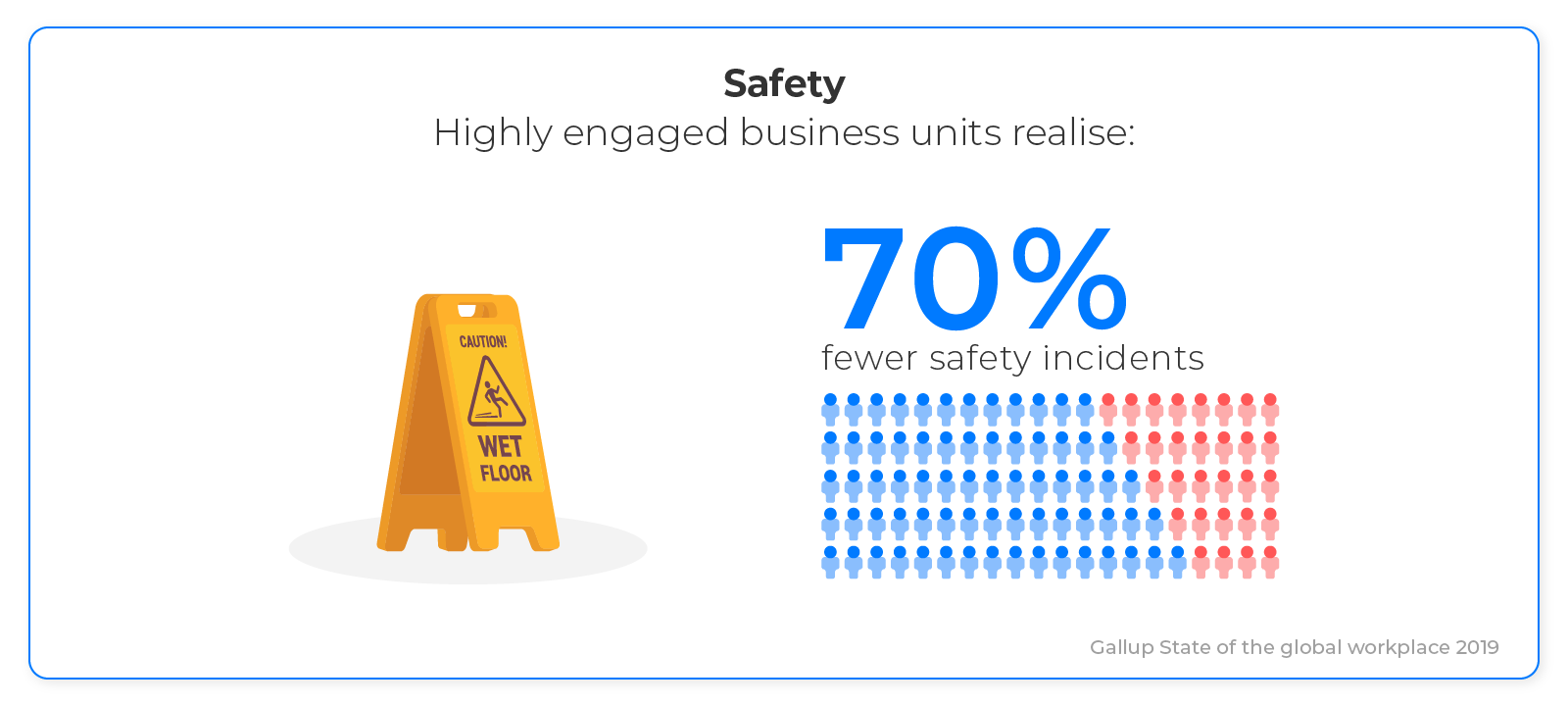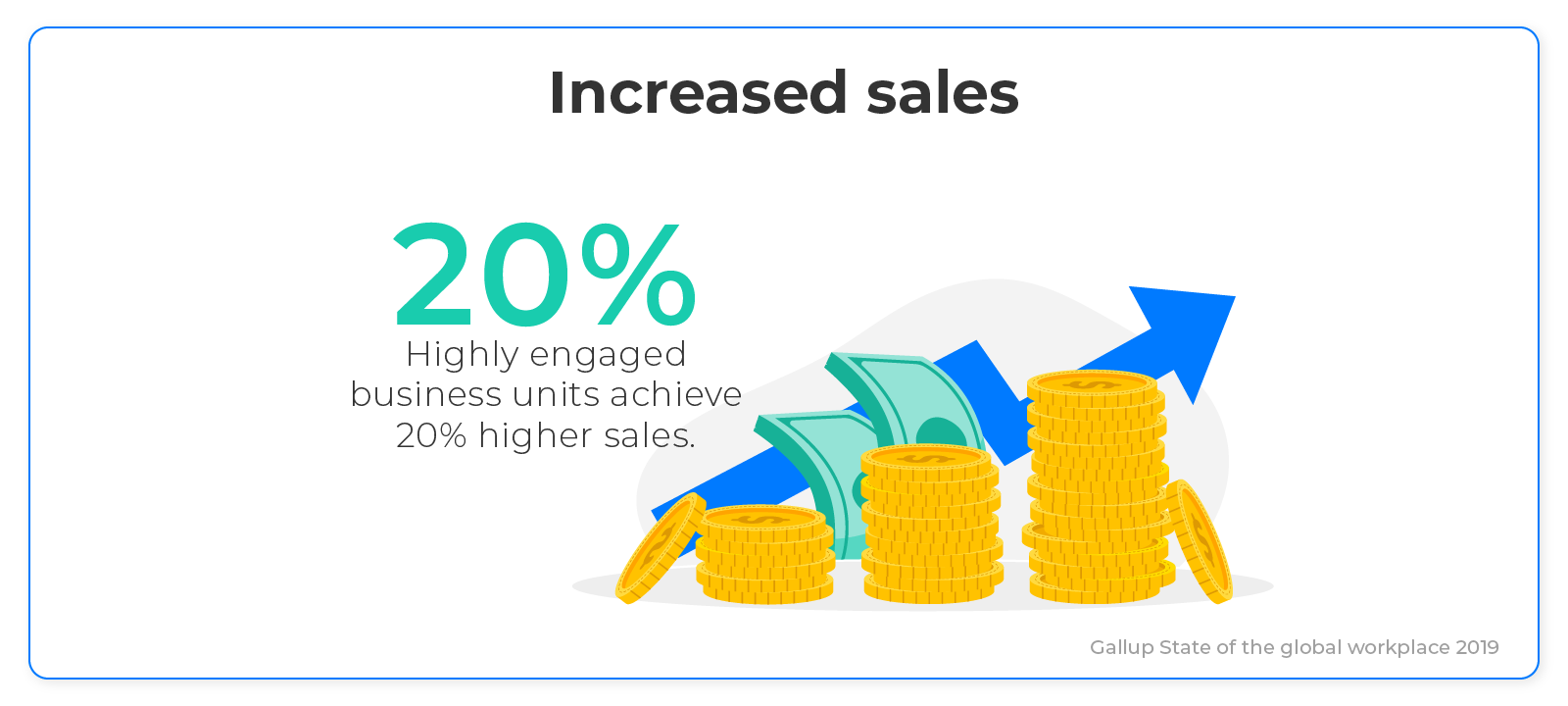There is always room to Improve employee engagement, regardless of an organisations size or how long it has been running employee engagement activities. But knowing how to implement employee engagement ideas, is often a daunting task that eludes most businesses. This means that the status quo remains, and businesses fail to capitalise on the benefits of an engaged workforce. In this blog we’ll look at what good employee engagement looks like, what it means for the organisation and three key steps to help you improve employee engagement.
What does good employee engagement look like?
This depends on how you define employee engagement, and it will vary from company to company. Often the assumption is that employee engagement is happy and satisfied employees. While happiness is a part of the employee engagement formula, there are other elements that range in importance. From productivity, good communication, working well as a team, to job satisfaction, high staff retention and strong internal relationships.
There are 10 key elements that influence an engaged workforce. (read our previous article here to help you create your own definition of employee engagement). If you can influence each of these factors and achieve a happy, motivated workforce who communicate well, who are rarely absent and that stay with you then you’re doing well.
Defining what good looks like, is essential, as it serves as a benchmark that you can rank your employee you need to focus your efforts.

Three key steps that you can take to improve employee engagement
Getting started and making positive change is crucial to engaging your workforce. It’s easy to get consumed in the planning without actually delivering anything, so to get you started, while you complete your own definition, we’ve compiled three key steps that you can implement now:
1. Leading by example is always a good place to start
Employee Engagement should be viewed with the same importance as any other business initiative; it cannot be assumed that it will just happen naturally. There needs to be an instigator, adoption strategist, promoter or champion and most importantly, someone heading each department that ‘buys in’ to the concept. Leading by example is key to engaging staff, if they see business leaders and department heads endorsing a company initiative, adoption rates soar. (Also, read our previous blog on "Is your leadership style affecting your employee engagement for good or for ill?")
2. Choosing a platform for your employee engagement initiative
As identified earlier in this article, employee engagement has a number of key elements. Don’t try to address each of these on different communication channels. The result will be noise and confusion. Keep communication simple and accessible with a single employee engagement platform for all employees.
The platform needs to cover the most important engagement elements and be accessible by all of your employees whether on or offsite.
The platform must also be simple to update. It’s far too easy to get consumed by tactics and features, when what you really need is simplicity.
Reporting should also be a primary consideration. Having department heads and board members actively involved in the initiative is crucial, but it will reveal a need for reporting as department heads are more likely to request information on how well the employee engagement initiative is performing, especially if they’re committing time and resource to it.
Read the article below for the full 7 steps to Improving Your Organisation’s Employee Engagement...
3. Listening to your employees is another key area to improving employee engagement
An all in one platform and one platform for all, levels the playing field, standardising communication across your organisation regardless of an employee’s job role. This is hugely important if you want to foster an environment where employees are heard, and that voice is welcomed. Listening to employees is a key factor in creating an engaged workforce
How do you currently receive feedback from your workforce?
Do you:
- Rely on my key head of each department to feedback on behalf of their team?
- Expect HR to monitor the thoughts and feelings of your employees and feed back to you?
- Expect staff to find and complete feedback forms, surveys etc
- Assume that’s what appraisals are for?
- Do nothing
I hate to be the bearer of bad news but none of the above will be adequate for your staff as a satisfactory method to feedback their needs, the organisations shortcomings or for them to feel heard.
Having a voice and being heard, is a key driver of an engaged, happy and productive workforce. The good news (from a business owner’s perspective) is that this is the current state of play for your competitors too. It is only in the past few years that innovative organisations have realised the business benefits to improving employee engagement and apps are now on the market to help business owners listen and hear their employees.

Why you need to improve employee engagement and what it means for your organisation?
Do you personally work best and are more engaged when you are happy, comfortable, have clearly defined goals, the right, updated equipment and motivation to do a good job? Your workforce is exactly the same. Growth driven businesses are beginning to recognise the importance of employee engagement and viewing these contributory factors across the organisation. The rewards beside a happy team are palpable:
- Employee retention rates
- Health and Wellbeing – less absenteeism
- Communication and shared knowledge
- Productivity
- Profits
Why improving employee engagement should be as important as any other business improvement initiative
The people that you employ are your biggest company asset and like any asset they need to be maintained, looked after, secured and nurtured in order to run smoothly and productively.
Each employee has their own individual needs and expectations. Employee Engagement is one of the most critical business improvement initiatives you will undertake. But the cost of inaction over time is greater than most alternative improvements businesses seek. Not only is it cost efficient to improve employee engagement, this initiative has a ricochet effect on the entire workforce and therefore the entire business. Get it right and reap the rewards, get it wrong and it will be detrimental to your business.
Conclusion
It doesn’t have to be complicated; organisations can achieve good Employee Engagement and start seeing the business gains early in the processes of implementation. Lead with example, create an environment where staff can express their ideas thoughts and feelings and listen and be seen to listen to your workforce.
Topics:
Employee Engagement





.jpg)
.jpg)